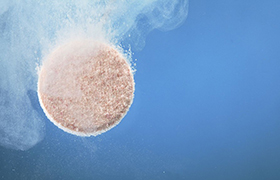How the biodegradability of medications can be improved
German scientists have found a sustainable solution for water contamination with pharmaceuticals. Because effluent treatment is not sufficient for the clearance of medications from waste water, the researchers developed a technique increasing the biodegradability of pharmaceuticals. The principle is explained in Environmental Science & Technology.
The technique was developed using the beta blocker propranolol, which is not biodegradable and is detected in sewage treatment plant effluent at concentrations ranging from 30 to 373 ng/L. By exposing the medication to UV light, the scientists obtained various photolysis products of propranolol with minor molecular changes.
Derivatives with intact drug moieties were further screened for aerobic biodegradability, pharmacological potency and toxicity. Especially changes that opened up the ring-like structure of propranolol increased biodegradability, because microbes have greater access to digest it. In the end, the molecule 4-hydroxypropranolol turned out to be the best substitute. However, further tests, like clinical trials, will have to be performed before it can be introduced to the market.
Irrespective of the outcomes for propranolol, the research group has shown that their technique can identify pharmaceutical variants with a higher biodegradability. This accounts for existing as well as for new medication and is therefore, according to the authors, a sustainable solution in the broadest sense.
Source: Environmental Science & Technology
MedZine writes about notable science twice a week.







